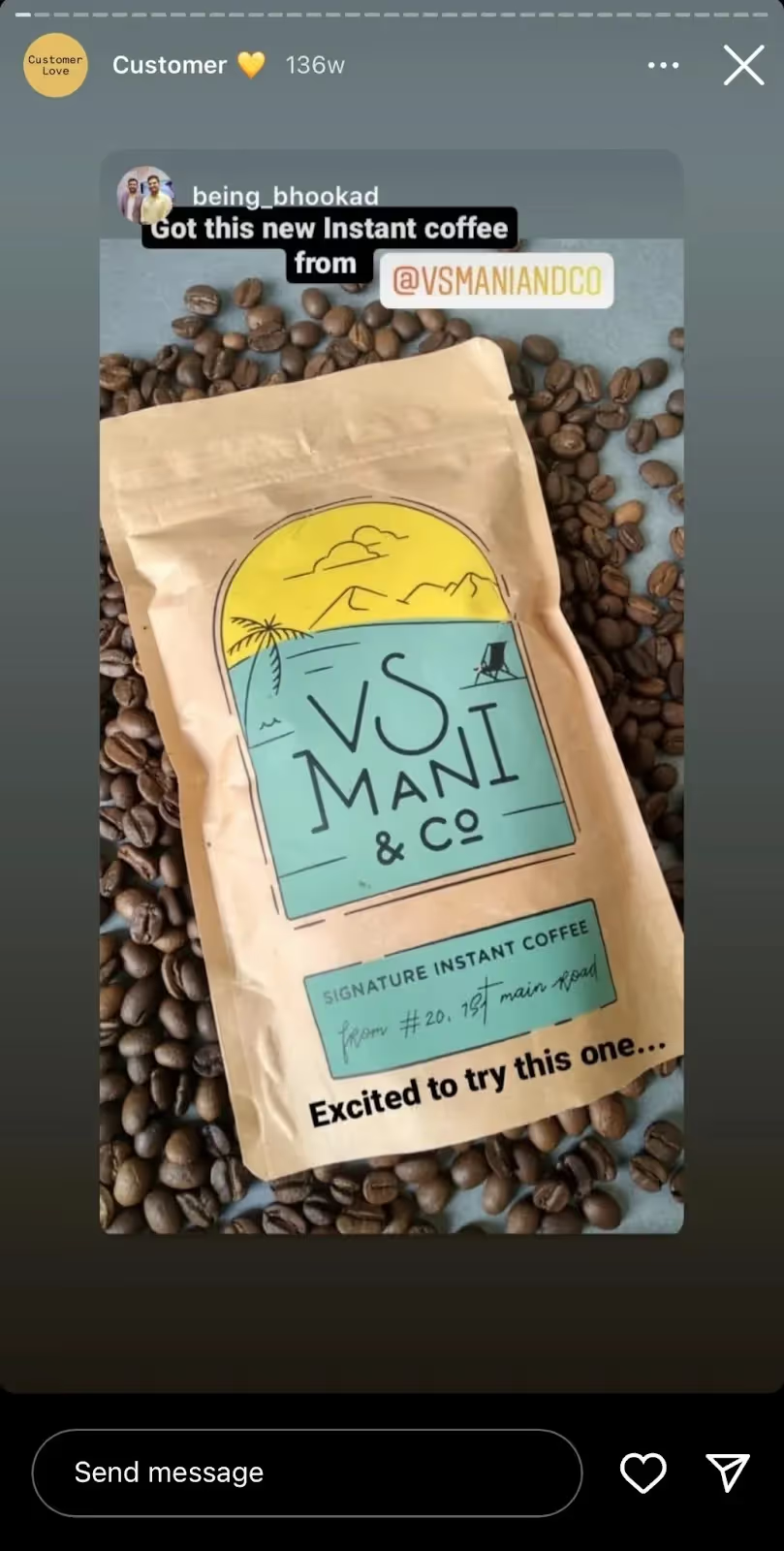Instagram is one of the fastest-growing social media channels and has opened up a whole new way of marketing your business. However, despite this social media channel's immense popularity, many companies still need to learn how to use it effectively.
And this is especially true for Instagram Stories!
While many brands get plenty of Instagram Stories views, they need help turning them into high-quality leads. This blog will provide you with all the necessary information to turn your Instagram Stories views into leads that convert!

Importance of Instagram Stories for Lead Generation
1. High engagement
Instagram Stories have a high engagement rate, which means they effectively capture the audience's attention and help generate leads. To put this into perspective, around 70% of Gen Zers and 59% of Millennials watch Instagram Stories daily.
With features such as polls, quizzes, and questions, you can encourage your followers to interact with your content and build a connection with them.
2. Excellent product marketing channel
Did you know that 50% of users claim to have visited a website to buy a product/service due to seeing it in Stories?
Instagram Stories provide a visual and interactive way to showcase your products or services. Remember, if you can guide your online audience to learn more about your product/service, you’re shifting your audience down the funnel in preparation for converting into a customer!
3. Personalized communication
When you're reaching out to new leads, it's vital to engage with them in a personalized way. Instagram Stories can help you do that!
It is, therefore, no surprise that brand Stories have a whopping 86% completion rate.
4. Cost-effective
Instagram Stories are a cost-effective way to generate leads because they are free to create and share. By optimizing your content and strategy, you can generate high-quality leads without spending a lot of money on advertising.
5. Measurable results
Instagram provides data and analytics for Instagram Stories, which means that you can measure the performance of your content and strategy. By analyzing metrics such as impressions, reach, engagement, clicks, and retention, you can optimize your approach to generate more leads.
Data-Driven Approach to Instagram Stories
Data is the lifeblood of all businesses. And when it comes to generating leads, having great data is key.
The different uses of influencer marketing data include -
- Influencer data helps brands understand the type of marketing that works with a creator’s audience
- With influencer marketing data, brands can get maximum ROI on influencer marketing
- Influencer marketing data help brands avoid scams and frauds
Read more: Data Is Good, But Insights Are Better For Effective Influencer Marketing
Because Instagram Stories is a visual channel, it's easy to assume that all you need is the right creative and good content. But if you don't understand what's working and what's not, then you won't be able to optimize your strategy.
Solid Instagram Stories data will help you
- understand your audience,
- refine your marketing strategies,
- personalize your communication,
- improve lead quality,
- optimize your sales process, and
- effectively measure ROI.
How to measure Instagram Stories performance using data
1. Track reach
Reach is the number of unique users who saw your Instagram Story. You can track reach to determine how many unique viewers your Story reached as well.
2. Analyze engagement
Engagement measures how many people interacted with your Instagram Story. You can track engagement to see how many people tapped to move to the next story, tapped to reply to your Story, or swiped up on your Story. This metric can help you understand your content's level of interest and engagement.
3. Measure clicks
This metric indicates the number of times users click on CTAs in your Instagram Story.
You can track these clicks to determine how many viewers visited your landing page from your Story. Measuring clicks can help you analyze how effective your Story is at driving traffic and, in turn, generating leads.
4. Analyze retention
Retention measures how long people are watching your Instagram Story.
Let’s say you post multiple stories in a day. You can track retention to determine how many people are watching your Story all the way through and where drop-offs are occurring.
You can also keep tabs on how many followers continue to view your story over a period of time, like a week, month, and so on. You can then calculate if your followers are consistent in viewing your stories and make changes if there’s a significant drop in the view count and overall viewer retention.
This metric can help you understand how engaging your content is and how you can optimize it for better results.
5. Compare A/B tests
A/B testing allows you to test different Story versions to see which performs better.
Create two different versions of your story — one that includes a specific feature or action (and is labeled as such) and another that doesn't include this feature or action. You'll then show each version equally over time so they can each get equal exposure and clicks from users who see them in their feed. Then, once you've collected enough data, compare the results of each version to see which one gave you better results.
You can then use this data to create more compelling content by comparing metrics such as impressions, reach, engagement, clicks, and retention.
Read more: How to Maximize the ROI of Instagram Stories for Influencer Marketing
Tips for Using Instagram Stories for Lead Generation
1. Understand the target audience
Instagram Stories are a great way to share information with your followers, but it won't do much good if you don't know who you're talking to.
Before you start crafting your next story, take a few minutes and think about exactly who your audience is. Are they millennials? Seniors? Business owners?
Once you've figured out who they are, try to imagine what they want from your brand—what kind of content would keep them interested and engaged in what you're sharing?
If you can't answer those questions, it may be time to do some research.
2. Create engaging content
You've probably heard this tip before, but it's worth repeating.
When trying to generate leads on Instagram Stories, you want to ensure that your content is engaging and interesting. The more engaged your followers are with your content, the more likely they are to take the next step and turn into actual sales leads.
If you're using Instagram Stories for lead generation, make sure that whatever content you post is related to your business. For example, if you sell makeup brushes, post pictures of yourself using those brushes and talk about how they've helped you achieve your makeup goals. If you sell jewelry, post pictures and videos of people wearing your jewelry.
Instagram Stories are a great place to show off your personality, but they're also a great way to engage customers with products or services. If you're selling something, consider making Instagram Stories highlighting a customer's experience with your product or service.
Here are some simple yet effective tips for creating engaging Instagram Stories content -
- Consistency is key
- Keep it simple
- Stay on brand
- Don't forget about storytelling
- Experiment with new features
3. Use CTAs effectively

If you want your Instagram Stories to drive leads, you need to use CTAs.
But how do you do that?
First, make sure that every story has a CTA. It doesn't matter if the purpose of your Instagram Story is to build awareness for your business or sell something directly—it should always end with an action.
Second, create a clear and compelling CTA. Don't just tell people to "click the link" at the end of the story—be specific about what they'll find on the other side!
Here are three tips for using CTAs effectively in your Instagram Stories:
- Include a CTA on every story
- Use different CTAs depending on the context of your story
- Use action words in your CTA
4. Leverage user-generated content

Do you know what's better than a company posting its original content? A company that's posting its customer's content!
Yes, Instagram is an excellent platform for generating leads, but you can't just post an ad and expect people to convert. You have to get your followers invested in your Stories.
Two of the best ways to do this are by getting your users involved in your Instagram Stories content generation process and sharing other customers’ experiences as testimonials, for instance.
Here are a few tips for leveraging user-generated content for your Instagram Stories -
- Encourage your customers to add Stories of your products by tagging you. You can then reshare these Stories on your brand account. You can provide these customers some incentive like 10% off on their next purchase for doing so.
- Regularly share customer testimonials and reviews to build your credibility.
5. Use the Phyllo API to capture leads
Instagram Stories data collection comes with its own set of technical difficulties -
- Third-party data scraping is not possible,
- Linking accounts with the developer’s app is very complicated,
- Stories are ephemeral data and expire after 24 hours,
- Facebook doesn’t provide necessary Story webhooks for all creator accounts.
So, can you effectively collect Instagram Stories data?
With Phyllo’s Engagement API, you can get a regular stream of content data and engagement metrics, such as likes, views, reach, impressions, etc., for multiple post formats.
Now, we also report authenticated Instagram Stories data in a secure and user-consented manner.
Here are some of the benefits of using Phyllo API to access Instagram Stories data -
- Streamlined and up-to-date metrics collection
- Simple Phyllo connect SDK for better user experience
- Webhook notifications
Also read: Easily Capture and Analyze Instagram Stories Data with Phyllo
6. Strategize for nurturing leads
The best way to use Instagram Stories for lead generation is to plan it out in advance and stay consistent. This plan needs to lay out your entire 360-degree approach.
So, don’t just brainstorm about how to get your viewers to your landing page. Instead, carefully strategize the ‘after’ they visit your website as well. This means your landing page content, CTAs, contact information forms, subsequent communication flows, etc.
Try out the Phyllo API today!
Data is a big deal in the world of lead generation.
The data you collect about your audience—who they are, what they want, and how to reach them- will help you turn views into leads.
Currently, Phyllo handles millions of stories a month across campaigns! We aim to be a catalyst in maximizing your influencer marketing efforts.
Schedule a call to learn more about how Phyllo can empower your business.
Want to test the waters before you go ahead? Sign up for a free account to access creator data with Phyllo APIs.

.avif)







